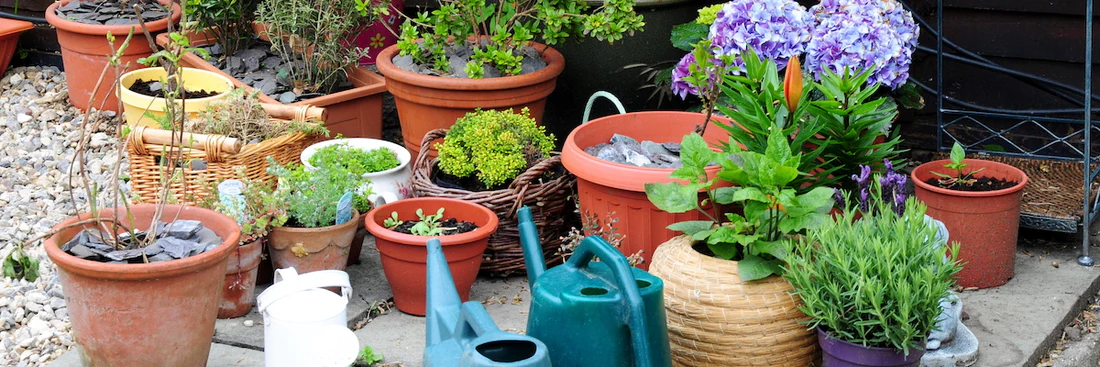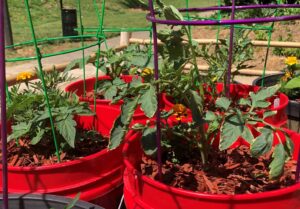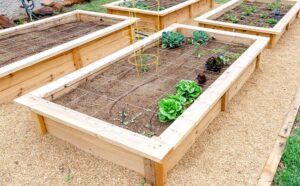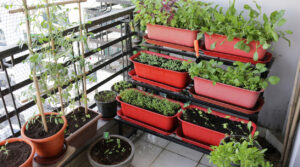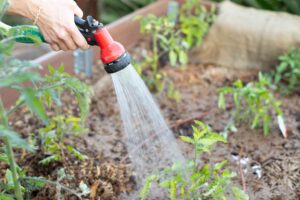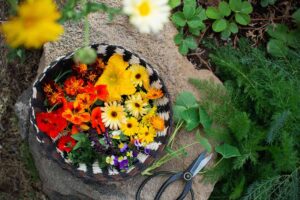Tips for Successful Container Gardening: A Complete Guide
Container gardening has surged in popularity across the US in recent years, especially in urban areas where garden space is limited. Whether you’re a city dweller with only a balcony to spare or a suburban homeowner looking to add visual interest to your patio, container gardening offers a flexible, manageable way to grow everything from ornamental flowers to fresh vegetables and herbs.
According to the National Gardening Association, container gardening has seen a 65% increase in participation among US households since 2020, with millennials and apartment dwellers leading this green revolution. This guide will provide you with comprehensive tips and strategies to ensure your container garden thrives, regardless of your experience level or available space.
Why Choose Container Gardening?
Container gardening presents numerous advantages that make it an attractive option for many Americans:
- Flexibility: Easily move plants to optimize sun exposure or protect them from harsh weather
- Accessibility: Perfect for those with limited mobility or physical disabilities
- Space efficiency: Ideal for apartments, balconies, patios, or small yards
- Pest control: Reduced exposure to soil-borne diseases and ground-dwelling pests
- Decorative potential: Containers add visual interest and can complement your home’s aesthetic
- Extended growing seasons: Containers warm up faster than ground soil in spring
According to the USDA, “Container gardens can be productive, attractive, and convenient for many gardeners when space is limited or soil conditions are poor.” For more detailed information on plant selection for your specific region, visit the USDA Plant Hardiness Zone Map, which provides valuable guidance on which plants will thrive in your local climate.
Essential Container Gardening Supplies
Before you begin, gather these fundamental supplies:
- Containers: Choose options with drainage holes in various sizes appropriate for your plants
- Potting mix: Use high-quality soil specifically formulated for containers
- Plants: Select varieties suitable for container growth and your climate
- Basic tools: Trowel, pruners, watering can, and gloves
- Fertilizer: Slow-release or liquid options designed for container plants
- Mulch: To help retain moisture and regulate soil temperature
Choosing the Perfect Containers
The type of container you select can significantly impact your gardening success. Consider these factors:
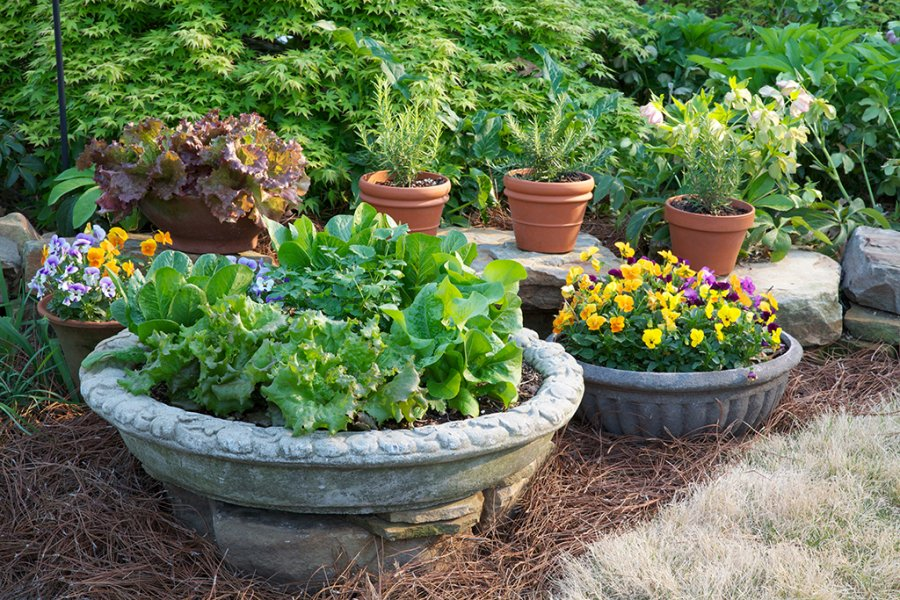
Material Matters
Different container materials have distinct advantages and limitations:
| Container Material | Pros | Cons | Best For |
|---|---|---|---|
| Terracotta/Clay | Natural look, breathable, sturdy | Heavy, breakable, dries out quickly | Herbs, drought-tolerant plants, Mediterranean plants |
| Plastic | Lightweight, inexpensive, retains moisture | Can deteriorate in UV light, less stable | Moisture-loving plants, large plants, beginners |
| Ceramic | Decorative, stable, good insulation | Expensive, heavy, can crack in freezing temps | Ornamental displays, houseplants, focal point plantings |
| Concrete | Extremely durable, excellent insulation | Very heavy, permanent, can leach lime | Permanent installations, large specimens, security from theft |
| Metal | Modern aesthetic, durable | Conducts heat/cold, can rust, may leach metals | Modern garden designs, heat-loving plants (with caution) |
| Fabric | Excellent drainage, promotes air pruning | Less attractive, shorter lifespan | Vegetables, root crops, plants needing good drainage |
| Wood | Natural look, good insulation | Deteriorates over time, can harbor pests | Vegetables, strawberries, mixed plantings |
Size Considerations
Container size is crucial for plant health. As a general rule:
- Small plants (herbs, lettuces): 6-8 inches deep
- Medium plants (peppers, cucumbers): 10-12 inches deep
- Large plants (tomatoes, eggplants): 14+ inches deep
Remember that larger containers:
- Require less frequent watering
- Provide more room for root growth
- Offer better temperature stability
- Support larger plant varieties
According to the University of Illinois Extension, “Choosing the right size container is critical. When containers are too small, soil dries out quickly and roots become crowded, which can stress plants and reduce productivity.” For more guidance on container sizing, visit the National Center for Home Food Preservation, which offers advice on growing edible plants in containers.
Selecting the Right Potting Mix
Garden soil is too dense for container gardening and can introduce diseases. Instead, use a high-quality potting mix that offers:
- Good drainage while retaining adequate moisture
- Sufficient aeration for root development
- Appropriate weight (not too heavy or light)
- Sterile composition to prevent disease
- Balanced nutrient content
You can purchase pre-made potting mixes or create your own with this basic recipe:
- 1 part peat moss or coconut coir
- 1 part perlite or vermiculite
- 1 part compost or well-aged manure
For edible plants, consider organic potting mixes. The Environmental Protection Agency provides guidelines for safe soil practices at EPA’s Composting At Home.
Choosing Plants for Container Success
Not all plants thrive equally in containers. Consider these factors when selecting plants:
Climate Compatibility
Choose plants suited to your USDA hardiness zone. Container plants are typically more vulnerable to temperature extremes than ground-planted specimens.
Space Requirements
Look for:
- Dwarf varieties: Bred specifically for small spaces
- Determinate varieties: For vegetables that grow to a predetermined size
- Compact cultivars: Naturally smaller growth habits
Container-Friendly Plant Categories
Vegetables:
- Tomatoes (especially determinate varieties)
- Peppers (bell, chili)
- Lettuce and greens
- Radishes
- Carrots (short varieties)
- Eggplant
- Bush beans
- Cucumbers (with support)
Herbs:
- Basil
- Rosemary
- Thyme
- Mint (always grow in containers to prevent spreading)
- Oregano
- Parsley
- Chives
Fruits:
- Strawberries
- Blueberries (dwarf varieties)
- Citrus (dwarf varieties)
- Figs (compact varieties)
Flowers:
- Petunias
- Geraniums
- Marigolds
- Zinnias
- Begonias
- Calibrachoa
- Pansies
- Sweet alyssum
According to research from the American Horticultural Society, “Plants with naturally compact growth habits or those bred specifically for containers typically perform better in limited spaces and require less maintenance.”
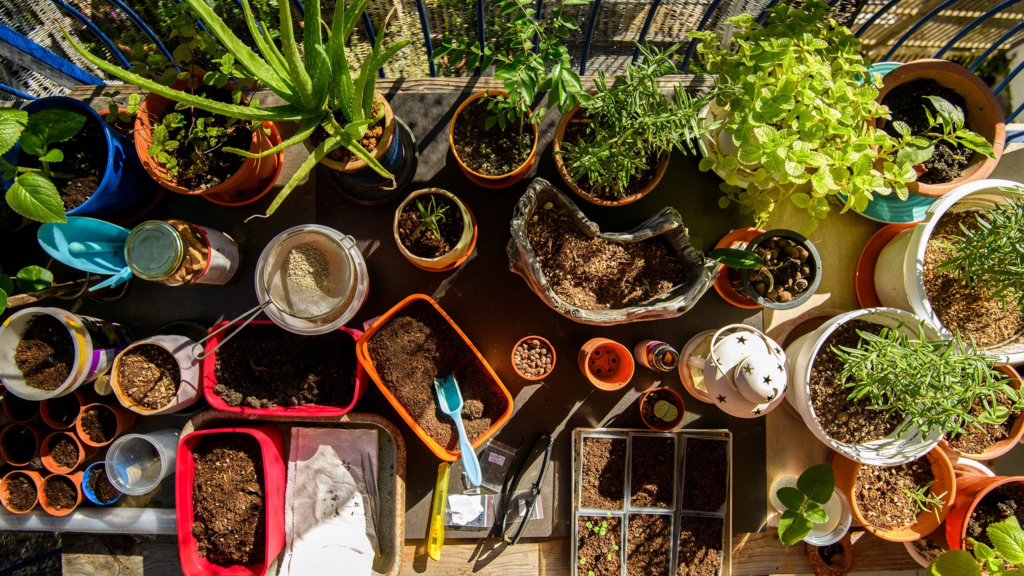
Planting Techniques for Container Gardens
Follow these steps for successful container planting:
- Preparation: Ensure your container has adequate drainage holes
- Add drainage layer: Consider a thin layer of gravel or broken pottery pieces (though some experts now consider this unnecessary)
- Fill with soil: Leave about 1-2 inches of space below the rim
- Plant positioning: Place plants at the same depth they were in their nursery containers
- Spacing: Follow spacing recommendations, but generally you can plant more densely than in-ground gardens
- Water thoroughly: Until water comes out of the drainage holes
- Add mulch: A thin layer helps retain moisture
Creative Planting Arrangements
Thriller, Filler, Spiller is a popular container design concept:
- Thriller: Tall, eye-catching plant as the centerpiece
- Filler: Medium-height, bushy plants that fill the middle area
- Spiller: Trailing plants that cascade over the container’s edge
This approach creates visually dynamic containers with plants that complement each other both aesthetically and in terms of growing requirements.
Watering: The Key to Container Gardening Success
Proper watering is perhaps the most critical aspect of container gardening. Containers dry out faster than in-ground gardens, especially:
- During hot weather
- In windy locations
- In porous containers (like terracotta)
- When plants are large relative to the container size
Watering Guidelines
- Check moisture levels: Insert your finger 1-2 inches into the soil; if it feels dry, it’s time to water
- Water thoroughly: Until water flows from drainage holes
- Water the soil, not the foliage: To prevent disease
- Morning watering: Allows foliage to dry during the day
- Consider self-watering containers: For consistent moisture
- Adjust seasonally: Increase frequency during hot weather
According to the United States Environmental Protection Agency, “Water-efficient gardening practices can reduce water usage by 20-50%, saving both resources and money.” The EPA offers additional water conservation tips on their WaterSense program website.
Fertilizing Container Plants
Container plants require regular fertilization because nutrients leach away with frequent watering. Follow these guidelines:
Fertilizer Options
- Slow-release granular fertilizers: Apply every 2-3 months
- Liquid fertilizers: Apply every 1-2 weeks at half the recommended strength
- Organic options: Compost tea, fish emulsion, or seaweed extract
- Specialized formulas: Higher phosphorus for flowering plants, balanced formulas for foliage
Fertilizing Schedule
- Spring: Begin fertilizing when active growth starts
- Summer: Maintain regular feeding schedule
- Fall: Reduce feeding as growth slows
- Winter: Minimal or no fertilization for most plants
Over-fertilization can damage plants, so always follow product instructions and err on the side of under-fertilizing rather than over-fertilizing.
Managing Pests and Diseases in Container Gardens
While container gardens generally experience fewer pest issues than in-ground gardens, they’re not immune to problems. Practice these preventive measures:
- Regular inspection: Check leaves (both top and bottom), stems, and soil surface weekly
- Proper spacing: Allow adequate airflow between plants
- Clean tools: Sanitize gardening tools regularly
- Remove debris: Clear fallen leaves and plant material promptly
- Quarantine new plants: Keep recent purchases isolated briefly to ensure they’re pest-free
Common Container Garden Pests
- Aphids: Treat with a strong water spray or insecticidal soap
- Spider mites: Increase humidity and use appropriate miticides if necessary
- Fungus gnats: Allow soil to dry between waterings and use sticky traps
- Mealybugs: Remove with alcohol-dipped cotton swabs or insecticidal soap
The USDA’s Agricultural Research Service provides guidance on integrated pest management at USDA ARS Pest Management Research.
Seasonal Care for Container Gardens
Your container garden requires different attention throughout the year:
Spring
- Clean and sanitize containers
- Replace or refresh potting mix
- Begin gradual outdoor acclimation (hardening off)
- Start frost-sensitive plants after danger of frost has passed
- Begin fertilization schedule
Summer
- Monitor water needs closely, possibly watering daily
- Move containers to protect from extreme heat if necessary
- Continue regular fertilization
- Harvest vegetables and herbs frequently to encourage production
- Deadhead flowers to promote continued blooming
Fall
- Bring tender perennials indoors before first frost
- Harvest remaining edibles
- Plant cool-season crops like kale, spinach, and pansies
- Reduce watering and fertilization for perennials
Winter
- Move containers to protected areas if keeping outdoors
- Insulate containers against freezing with bubble wrap, burlap, or mulch
- Water sparingly but don’t allow soil to completely dry out
- Plan next season’s container garden
Troubleshooting Common Container Gardening Problems
Even experienced gardeners encounter challenges. Here are solutions to typical issues:
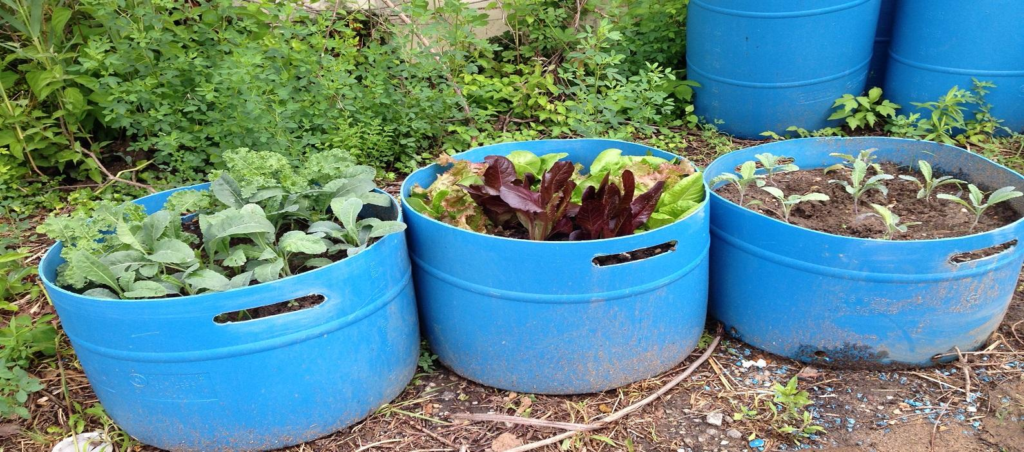
Yellowing leaves:
- Possible causes: Overwatering, nutrient deficiency, or pest problems
- Solutions: Adjust watering, provide appropriate fertilizer, check for pests
Wilting despite moist soil:
- Possible causes: Root rot, heat stress, or transplant shock
- Solutions: Improve drainage, provide shade, give recovery time
Leggy, stretched growth:
- Possible causes: Insufficient light or overcrowding
- Solutions: Move to sunnier location, increase spacing, prune as needed
Poor flowering or fruiting:
- Possible causes: Improper fertilizer, insufficient light, or temperature stress
- Solutions: Use bloom-promoting fertilizer, ensure adequate sunlight, maintain appropriate temperatures
Salt buildup (white crust on soil or container):
- Possible causes: Fertilizer accumulation or hard water
- Solutions: Leach containers thoroughly with fresh water periodically
Taking Container Gardening to the Next Level
Once you’ve mastered the basics, consider these advanced techniques:
Vertical Container Gardening
Maximize your space with:
- Trellises and supports
- Hanging baskets
- Wall-mounted planters
- Tiered container arrangements
- Repurposed pallets or shoe organizers
Container Combinations
Create productive and beautiful groupings:
- Culinary themes: Italian herb garden or salsa garden
- Pollinator support: Flowers that attract bees and butterflies
- Companion planting: Combinations that naturally repel pests or enhance growth
Succession Planting
Maintain continuous harvests by:
- Planting quick-growing crops between slower-maturing ones
- Replanting after harvesting one crop
- Staggering plantings of the same crop
- Planning seasonal transitions
Conclusion: The Joy of Container Gardening
Container gardening offers a rewarding way to connect with nature regardless of your living situation. With proper planning, appropriate supplies, and regular care, your container garden can provide beauty, food, and satisfaction throughout the growing season.
Remember that gardening is both a science and an art—don’t be afraid to experiment with different plants, containers, and arrangements. Each season brings new learning opportunities and the chance to improve your container gardening skills.
Whether you’re growing juicy tomatoes on your balcony, fresh herbs on your kitchen windowsill, or colorful flowers on your patio, container gardening allows you to bring the wonder of growth and the satisfaction of nurturing living things into even the smallest spaces.
According to the National Garden Bureau, “Container gardening continues to be one of the fastest-growing segments of the U.S. gardening market, with annual growth rates of 5-8% annually.” With the tips and techniques outlined in this guide, you’re well-equipped to join this growing trend and create your own thriving container garden.
